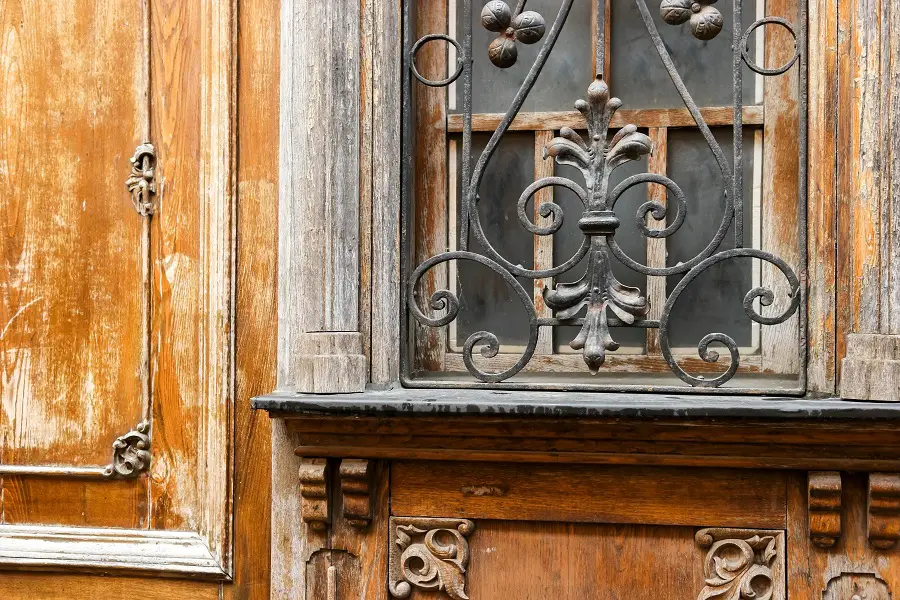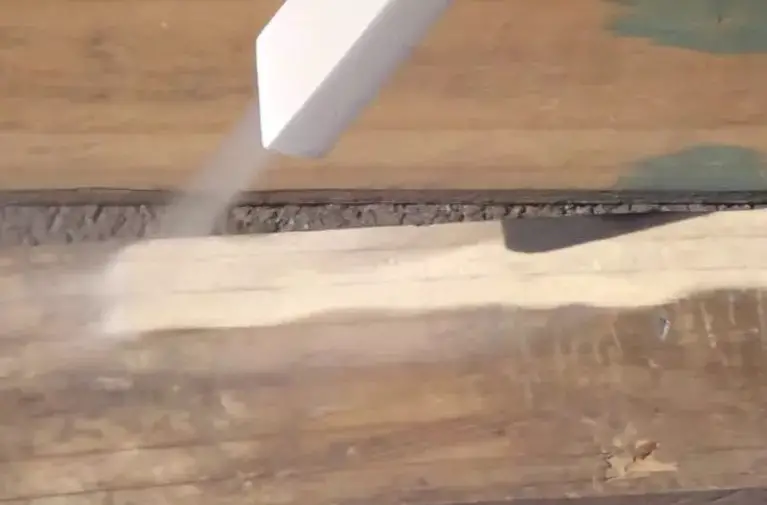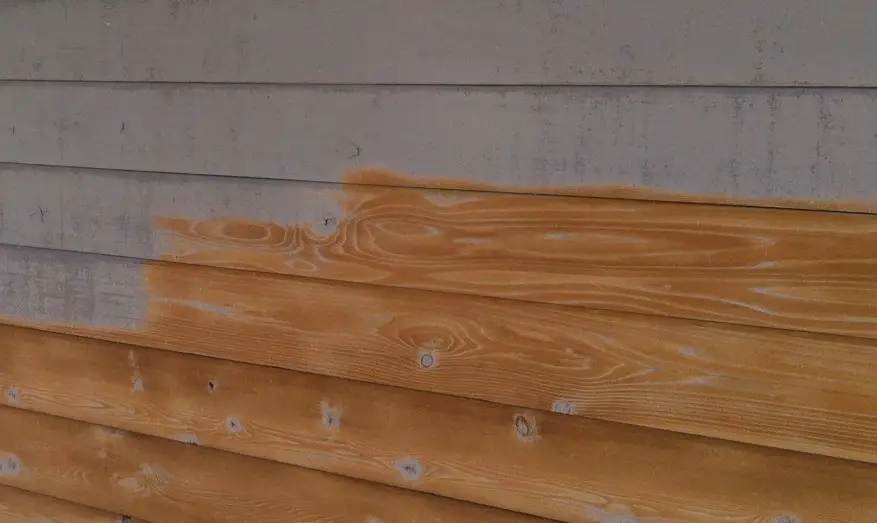Doors or windows with peeling paint, wood discoloured by weather or blackened by mildew, beams and panelling in old houses covered with dirt deposited over time, all have in common the need to be cleaned. There are many ways to do this, from sanding with sandpaperthe sandblasting with baking soda or walnut shellseach method has its pluses and minuses. Dry ice blasting is one of the most modern and cleanest methods that can also be applied to wood. I stress this because wood is sensitive and quite soft compared to other materials, and some cleaning methods can damage it irreparably. Find here one such example. Find out what dry ice is, how it works on surfaces and the advantages and disadvantages of the method below.

Dry ice, a residue-free blasting material
Dry ice is carbon dioxide brought from a liquid to a solid state by a controlled drop in temperature to -78°C. The ice is in the form of particles of various sizes that are pushed towards the surface to be cleaned by a flow of pressurised air. The air is generated by a special machine equipped with special nozzles that can impart supersonic speeds to the particles. The machines have different features, some with the ability to break up ice particles making them smaller and less aggressive.
When they reach the surface, the dry ice particles sublimate, i.e. they change from solid to gas. This leaves no residue, unlike ordinary blasting where the material used has to be recovered or discarded. As ordinary ice is not used, no water is involved in the process. This is another advantage of the method, as wood and especially old surfaces are sensitive to water, especially under pressure.
Obviously, dry ice blasting is not a method to turn to whenever you have a piece of wood that needs cleaning. Using it involves a special machine, dry ice and trained personnel who know how to use it.
How dry ice blasting works
The action of dry ice on surfaces to be cleaned is more complex than a simple abrasion process. Surface cleaning results from a combination of three factors:
- the speed at which particles are projected onto the surface
- the shock suffered when particles with a temperature of -78°C reach the surface
- ice sublimation which turns ice particles into much larger volume gas.
The very cold particles of dry ice hit the surface to be cleaned and are blown away by the compressed air. Their low temperature causes the top layer (paint, varnish, aged wood, mould, dirt) to shrink and detach from the wooden surface. At the same time, the loosened layer is crumbled by the ice that hits the surface hard. The sublimation of the ice particles works like small local explosions that pulverise the crumbled pieces of paint or other material, leaving the wood surface perfectly clean, with no residue.

Dry ice blasting is a method with many advantages
Dry ice blasting is not only preferred for the lack of residue. There are many other advantages that make this process a favourite with companies refurbishing old wooden houses, valuable doors and windows or cleaning mould-damaged wood. Here are some of them:
- Dry ice is not abrasive so the surface does not deteriorate. The property makes the method very suitable for cleaning old wood.
- There is no residue, the dry ice is non-toxic and the method is environmentally friendly and safe.
- Unlike some paint stripping methods, dry ice blasting does not use chemicals or solvents making the environment clean, safe and free of specific odours.
- No abrasive particles remain to be recovered or removed as waste.
- The very low temperature of the ice has an antibacterial effect, eliminating most viruses, insects and fungi.
- As it is a dry, waterless process, the wood is not affected and does not need drying time after the intervention.
- The process doesn't take long, and the objects don't need to be opened.
- Very suitable for carved wood or wood with more difficult geometry.
- Non-hazardous process, operators carrying out their work safely.
What are the drawbacks of sandblasting wood with dry ice
Although dry ice blasting is a cleaning method of choice and appreciated by many operators, compared to baking soda blasting, which is widely used on wood, it also has disadvantages:
- Very low temperature can cause peeling of layers if the cleaned surface consists of several bonded layers.
- In the case of burnt wood, the dry ice is not able to completely remove the smoke and so the smell does not disappear completely.
- The hose of the dry ice blasting machine is shorter than that of the bicarbonate blasting machine so that the ice does not liquefy. This makes the process more time-consuming.
- Dry ice is heavier and bulkier than bicarbonate and requires special equipment to handle.
- Dry ice tends to absorb oxygen, so ventilation is needed when working in enclosed spaces.
- It is not an affordable method. Since it involves special equipment and advanced technology, it cannot be used by anyone who wants to clean a piece of furniture for a DIY project.

Which wooden objects can be cleaned by dry ice blasting
In principle, any wood surface can be cleaned with dry ice. However, as it is a method that requires special equipment and knowledge, it is mainly used in large or special projects. Here are some of them:
- Wooden houses, railings, stairs, terraces, fences. Dry ice blasting removes dirt, weather marks, paint, varnish, oils, grease and silicone.
- Flooring, roof beams and posts, shutters. The perfect method for cleaning wood from old roofs. Ice gets into the most hidden places thoroughly cleaning the wood.
- Furniture. Light dry ice blasting is a common technique for cleaning and refinishing old wooden furniture, especially heavily used furniture with persistent stains, dirt and uneven layers of paint. Using dry ice blasting dirt particles, paint and varnish residues can be removed even from difficult areas. Handles and hinges can also be cleaned, and the low temperature guarantees the removal of viruses, fungi and unpleasant odours.
I hope you find the information useful. As usual, additions are welcome. And if you have any questions or queries, please leave them in the space below. I'm sure I'll reply.



























Add comment